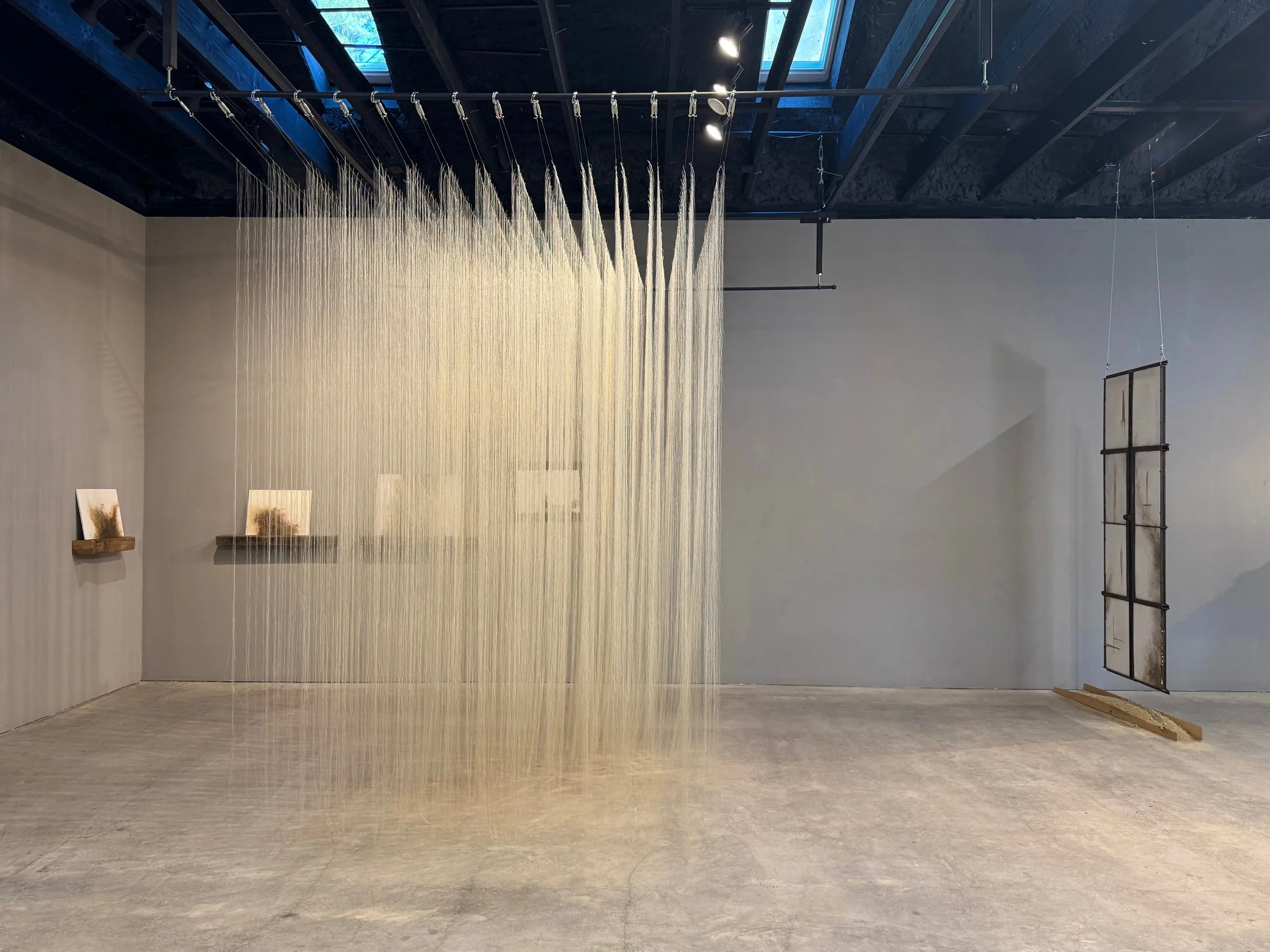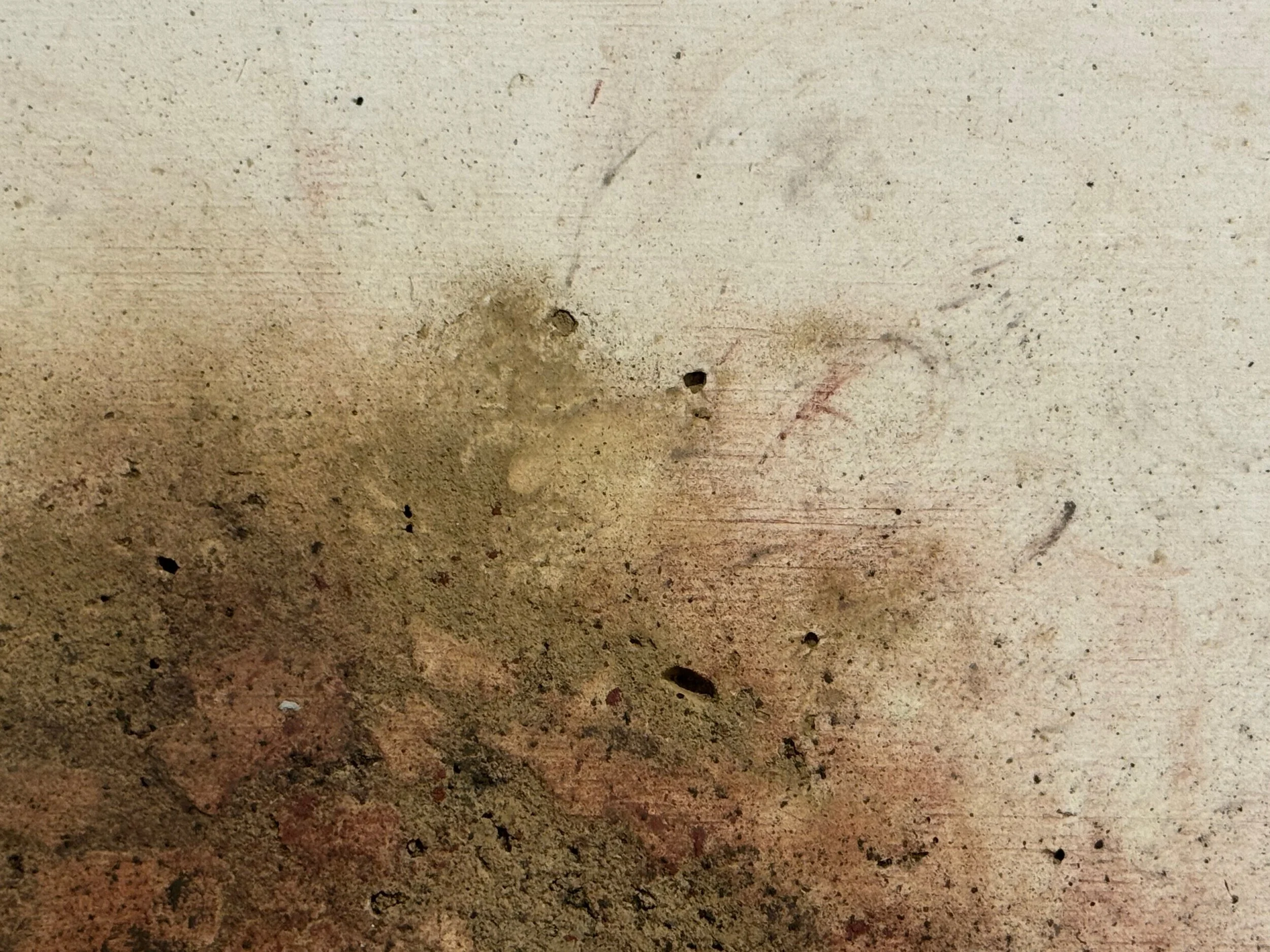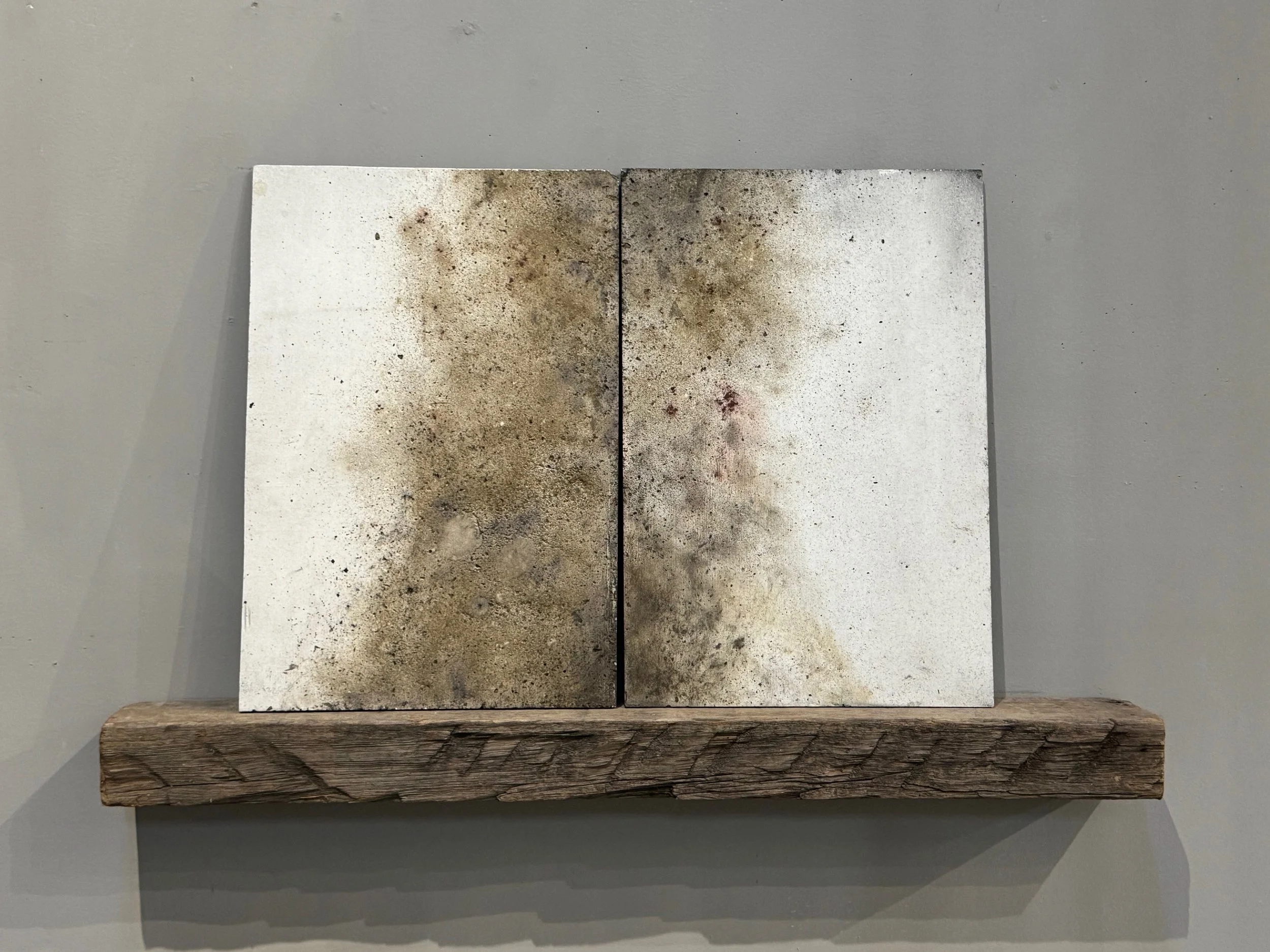Hot Coffee Conversation between two sculptors, Millicent Young and Steve Wood
Published Thursday, November 20, 2025
I met Steve Wood in 2023 when a mutual friend suggested that he might be able to help me out in the last-minute jam I was in, deinstalling a major exhibition of my work that had closed suddenly. Steve answered my cold call while on his tractor, mowing the fields where he lived, not far from me. I remember it was a glorious mid-October day, and against the drone of his tractor, the seeds of what would become an ongoing, unfurling conversation about art and nature and consciousness and life were sown.
We are both sculptors. We share New York City and Cape Cod as cornerstone places in our lives. Both of us had worked in helping capacities with people in need. We share an attunement to animals, the forces of nature, and the power of listening.
This Hot Coffee Conversation grew out of Steve’s desire to write about my work and Nina’s ongoing interest in it and her openness to experimentation with form. I recorded and edited the conversation between Steve and me that took place in my studio on a recent October day. As it turned out, I didn’t need his help deinstalling. All that continues to grow out of that first call is the blessing.
Nina’s question: Imagine yourself somewhere having tea or coffee. Where are you? What are you seeing?
Millicent Young: It’s early morning, full darkness, and I’m sitting in my bedroom looking out the east-facing windows into the blackness. My coffee is a dark roast with half and half, and it’s in a favorite mug from a favorite café where I used to live. Color is slowly arriving through the openings in the canopy of leaves, dun grey into rose grey, gold grey, salmon, white gold, cerulean. The leaves change from black to green and russet, rimmed in yellow and aubergine. In this moment, everything is still, no movement yet. My cat is purring in my lap. This is my morning ritual – repeated and never the same, being present to the shift from darkness into light. And if for some reason I miss this, I feel unmoored.
Where are you, Steve? What are you drinking and seeing?
Steve Wood: Well, right now, I'm drinking black tea in your studio on this amazing, almost fall morning in High Falls, NY, and I'm looking at your plaster works on the table. Thin flat tableaux like forms, I don't want to call them drawings. I don't want to call them paintings. I’m thinking about how reflective they are of natural forces that take form first invisibly, and then make themselves visible by their interaction with elements of the earth, like wind hitting the sand or water, or clouds. The wind is invisible until it makes contact with something, creating bursts and ripples and flows of movement. And these pieces in front of me right now have a range of tones that remind me of smoke and the kind of diaphanous, semi-translucent elements of storm clouds and sandstorms. Those are experiences in nature, whereas the plaster works themselves are artifacts that for me have almost no element of the artist in it, which I think is a compliment: that they are reflections of the artist enabling the forces of nature without putting her personality on it. They have no geometry, no marks of personality, except the edges of the plaster form that frames a fragment.
Millicent Young, Traces (i) (detail of recto side) 22 x 35.5 x 4 inches. Wood, plaster, pigments. Image courtesy of the artist.
MY; I love this so about our conversations - you go right into it - what I am trying to do. But that phrase ‘what I do’ makes me uncomfortable because it's more about making room for what will happen, for what will enter.
SW: Yes, that’s it. You make room for these things to happen, as opposed to making it whatever it is...This might be a slippery slope, but there is an element of a feminine force in nature that is not about personality, about enforcing one’s mechanical view of ‘how do I imagine three dimensions on a flat plane’. I feel that feminine force in these works.
MY: Mmmm…yet at the same time, all this work in process in the studio that we’re looking at is in some way rectilinear – an imposed form, an order.
SW: Also true - like the window piece suspended in free space. It’s two-sided. I see that you’ve fastened two fragments of steel window frames together to make a whole, but the structure still feels torn somehow. And the panes are plaster - dark on one side, light on the other. The surfaces and textures feel intimate, though. And they’re embedded with wood shards. There are vertical slits, like chinks framed by the wood, and I can see through the plaster panes here. The solidity perforated.
MY: Yeah. Everything has an orthogonal relationship: the slivers of light and wood, the lines I’ve drawn – architectural, like the steel frame itself. Fragments seeking some sort of order. And is that the force of some sort of cataclysm making those clouds of color on one side? But on the other side, the scale is ambiguous, like ‘Am I looking at deep space beyond these splinters?’ And that blackness, it feels soft but vast and somehow absent of fear… that’s how I came to feel about darkness in my late teens – as refuge even though as a child the nighttime was sheer terror for me…. I’ve always been trying to undo sidedness, the falseness of duality, the Cartesian hegemony, what divides us….
SW: I’m interested in the suspension aspect – there’s tension between the frame and the floor, the way it’s hovering, its precariousness.
Millicent Young, detail of hair installation in process. Cable, horse hair. Image courtesy of the artist.
MY: Me too and it’s not resolved – maybe there will be an element there…
SW: Like a base or plinth?
MY: (laughs) the platform problem! No, something that rests on the floor but doesn’t fill the gap, something that engages the third plane complicating sidedness of recto/verso….
As I’ve watched these works grow in the studio, I’m fascinated by the conversation that began to happen – like how something I thought belonged with this piece actually belongs with that piece. And how such radically different works on a continuum of formal and conceptual elements belong, live together... The dense flat thin window piece, the plaster tableaux, and the luminous light gathering hair cube - each with its own take on fragility and gravity and permeability….
SW: Yes, tell me about this hair piece. It’s a cube about 10’ high in free space….
MY: Well, it’s an architectural form like the window piece, made from a single material, hair. Thousands of strands of hairs sewn together and suspended. See how they stir with air movement? like breath. And they gather light and become a diaphanous form….
SW: You said ‘architectural’ but I would say it is a Platonic form because it is a pure essential elemental form/idea whereas with ‘architecture’ you're then imposing a kind of interiority and exteriority on it. Your hair cube has no corners or edges or hard planes so what is interior and exterior?
MY: That’s the essential question! Where does form end and space begin? What is the space between you and me? Where does a field begin and end? The hair reveals the nature of the light and also the invisible movement of air from a person passing or the open door….
It's an iteration in a series I’ve called Luminous Rooms. Maybe its working title is Breathing Room; I don’t know - it keeps changing. I’ve been interested in the notion ‘room’ as an architectural space for habitation and as an etheric emotional spiritual dwelling space and as a desire for freedom. The form is simultaneously permeable and impenetrable. No ceiling, just the stretched cables the strands are suspended from and the hair hovering over the ground, touching in some places. It’s about gravity and fragility, what holds us in place. And how much can be taken away and for things to still cohere. That’s really the question this work arose from – from a place of profound loss. And somehow this diaphanous breathing unnamable form emerged. Something about the irrevocability of beauty. Permeability as a continuum, as a life process, opening and closing, breathing.
SW: Yeah, I think a lot of the installation work in the 70s that I did had that similar kind of need to make something that is in space as much as it's in its form. The focal point with installation work such as this, and the work I was doing with paper and string and monofilament: it was a reaction to the architecture and the light and things like that. This has its own presence, so that you could actually bring it into different kinds of spaces, and it will behave differently. And I really appreciate this element. I'd love to see this installed. Tell me about that.
Millicent Young, studio view. Image courtesy of the artist.
MY: I’m very excited about this project and working with STRONGROOM in presenting it. It opens in May 2026. The project will be installed inside the old Ritz Theater Stage House in Newburgh, NY, an amazing semi-raw space that’s a stunning 5 stories high and 79 feet long. The hair form will have a projection on it and which also penetrates it and spills through onto the end wall behind it. The projection is intermittent, so the hair will be both a screen and an unprojected form unto itself. Surface and interior. There is an audio track connected with the projection, intermittent as well. Some ambient light comes in from the street windows, and urban sounds co-mingle with the recorded sounds, but it’s essentially a darkened space holding this shimmering form.
SW: Yeah. It'll be very ghostly. Are the projections organic forms, like clouds, or are there going to be objects?
MY: Organic forms mostly - imagery that I filmed here and in Truro. The movement of water and clouds. The audio I recorded here and on the Cape, too. And animals that appear like dream characters. I’m really interested in what’s going to happen on the end wall projection, too, and the shadow play of the viewers… some imagery of buildings may occur. I’m not sure.
SW: So, really multimedia.
MY: Yeah…. There will be this subtle sense of dislocation – like the audio won’t track exactly with the imagery; speeds will shift.
SW: That's what happens with these dreams.
MY: Exactly!
SW: So here’s my question, going back to the plaster pieces on the table: the hair installation and the window piece live in 3 dimensions, acted upon by the forces of gravity and light, and air movement. But the plaster pieces will go on the wall, so is it necessary that these have a top or a bottom? Is there a correct way to view these?
MY: I am constantly moving around them as I work on them, rearranging them – vertical, horizontal, back, front, two-sided. They’re outtakes from the window piece. Sometimes they’re singles, sometimes diptychs. They have no fixed orientation in space….
SW: So if I hung this piece on my wall like this on Thursday, and then on Friday put it that way, and then flipped them over on Sunday, would that be a violation?
MY: Not at all!
SW: I really think that's an important element. I hear you saying that the participation of the viewer is a collaboration in the perception of the piece.
MY: Definitely! The viewer is a collaborator with the work – physically and metaphysically. The work has a life of its own beyond me. In whatever world it enters – except the world of storage! - it has relationships and those relationships are living….
And also, going back to something you raised in the beginning, thinking about what it is that I do, I think about being the hollow bone through which things pass, a hollow bone shaped by my lived experiences, my ancestral experiences, by un/conscious awareness, by the forces around me. I actually have a partial animal bone, gnawed and hollow, that I keep near me as a talisman for that process that demands the emptying of a mind that can never be fully emptied. Maybe a mind in abeyance of itself long enough, fully enough to yield to what is coming through. Writers speak of the characters writing themselves. A poet friend calls it amanuensis….
What comes through shapes me as well; it’s a reciprocal process. And a felt one, somatic, with a distinct prelude and aftermath, and a pulse, like a wave pattern of activity and rest when it’s in the forming stages….
Millicent Young, Untitled. Detail. Plaster and pigments. Image courtesy of the artist.
SW: But how do we make art without thinking? And is that a pretentious attempt - to be that egotistic to think I cannot be in my work, it feels kind of absurd, right? Because then why make it? Which is what we get back to: why make objects?
MY: I don't know if it's about making art without thinking. For me, it is about making art with a humble mind. Maybe that’s heretical. The contemporary notion of an artist is so fraught with arrogant mind, you know? I just have never connected with it.
SW: Well, now we're stepping away from the art itself and making, and we're talking now about the cultural context that every artist of her time has to live in and relive in this time of the materialist, ego-centered idea of art stars. And art as a commodity. Because now you're talking about your role, or the artist's role, which is important. Why did that come to mind for you?
MY: By the humility required in the act of making.
It’s always been with me - from the beginning. As a young child, making was a way I made sense of the world. There were things in my family and in the world that were incomprehensible to me. Manipulating and combining materials, scraps of this and that, clay, anything - making things, making an imaginal reality was a way I self-soothed and lived. A way I metabolized the things I didn’t have words for. Giving them some sort of existence outside of myself. It was only when I was not able to make things when I went to college that I began to crumble, and so much began to unravel for me, ultimately bringing things into conscious awareness and into words. So my path didn’t follow the contemporary gatekeeping route of becoming an artist that exists today. When I’m asked, ‘How did you decide to become an artist?’ I say, ‘I didn't. It chose me….
…..There were so many other sources beyond the art history and visual artists I studied that influenced me, like geology, poetry and dance, spirituality, consciousness studies, and healing paradigms. These fields and the questions their intersections generate are still so important to me.
SW: Yeah, I felt (art making) as a refuge for me too because of the turmoil of my life and home. It was a place where I could be with myself and feel safe because I was outside of thinking about or feeling. It was a way to create an alternative place.
MY: Yeah, so much comes out of that - engaging with materials and the imaginal realm. We didn’t perceive ourselves taking risks, right? Risk was in the world we were seeking refuge from. And so curious how that can become something so slippery as adult artists - risk and our perception of it….
SW: That’s a whole topic for the next time!
Millicent Young, There Were No Buildings Left Standing (detail) 94 x 58 x 10 inches. Steel window frame, plaster, pigments, earth, pencil. Image courtesy of the artist.
Millicent Young, Traces (i) (verso) 22 x 35.5 x 4 inches. Wood, plaster, pigments. Image courtesy of the artist.






